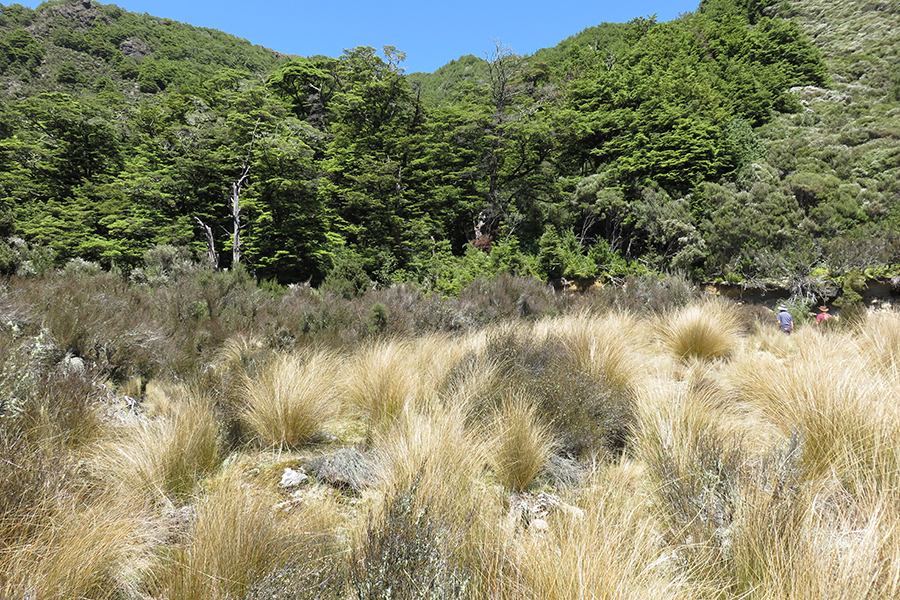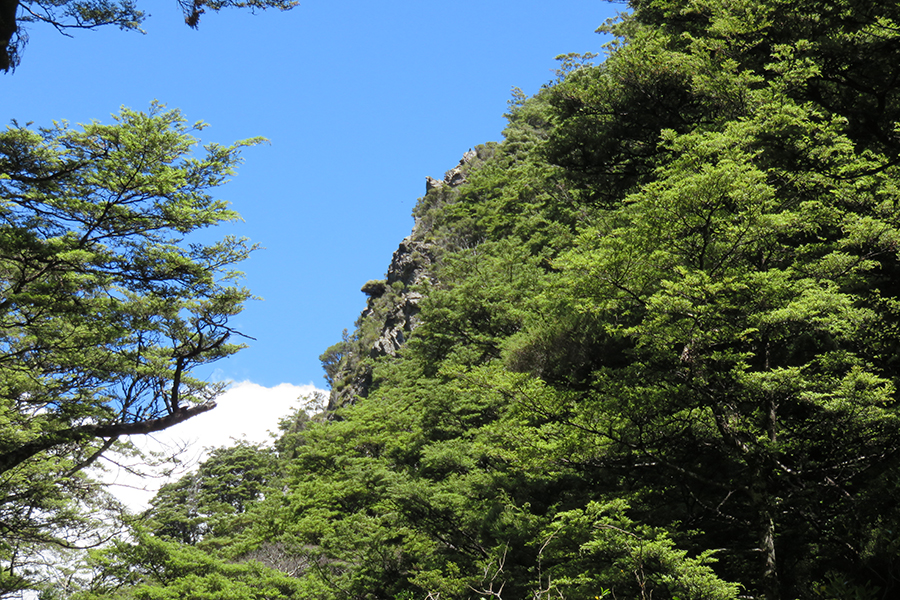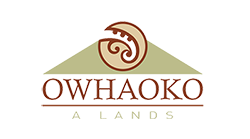Natural Environment

Conservation values and ecological significance
Owhaoko A block contains some outstanding landscape and ecological features which are the best examples of their type. Of greatest significance is the landscape and associated vegetation types of the valley floors of the Ngaruroro catchment, including the Panoko and Mangamingi Stream. The upper Ngaruroro Valley is the best preserved example remaining of an alluvial river landform and associated indigenous vegetation types, associated with the Taupo 232AD eruption. Similar landforms occur in the upper Taruarua and Taharua valleys however the vegetation of both of these areas have been modified to a much greater extent. The wetlands deserve special mention because of their near pristine condition and because together they make up the most significant area of wetland habitat within the entire Kaimanawa Ecological District.


Several threatened or at risk species have been identified on the Owhaoko A Lands.
Raoulia (a) (CHR 79537; “K”). Nationally critical. This is a very small mat forming plant which remains taxonomically undescribed. It grows in the flood zone alongside upland braided rivers and until this discovery it was only known adjacent to the upper Taruarau and Moawhango Rivers in the North Island. This is potentially the largest currently known population in New Zealand and strongly suggests that the upper Ngaruroro River has the largest population nationally as abundant suitable habitat occurs upstream.
Carex rubicunda; Nationally vulnerable. This is a small red-leaved sedge which grows in ephemeral wetlands, an uncommon type of wetland which is seasonally dry. It was found at one small site near the Ngaruroro River where 38 plants were counted.
Karearea/ New Zealand falcon (Falco novaeseelandiae). Nationally vulnerable. A single female falcon was observed hunting above the bush-line. Like elsewhere in the Kaimanawa Ranges falcon are present though at low abundance.
Isolepis fluitans var. fluitans. Nationally vulnerable. This is an aquatic sedge which grows in stream channels often those flowing from wetlands. It was seen at a single site in the upper Panoko Stream.
Hoiho/ native mint (Mentha cunninghamii). At risk – declining. This plant was observed at several locations generally near water amongst red tussock grassland and wetland margins.
Rifleman (Acanthisitta chloris). At risk – declining. Riflemen were heard on several occasions while surveying areas of mountain beech forest. It is likely that, as ship rats are absent or extremely uncommon at this altitude, the population here is probably stable.
New Zealand pipit (Anthus novaeseelandiae). At risk – declining. New Zealand pipit is numerous in the red tussock grassland and was also observed above the tree line. The introduced skylark, a close relative is also abundant.
North Island fernbird (Bowdleria punctata subsp. vealeae). At risk – declining. Fernbird were numerous in areas of monoao and manuka scrub and were regularly heard throughout the block whereever suitable habitat existed. At dusk near Mangataramea Hut at least half a dozen birds could be heard calling to one another. It is likely that, as ship rats are likely to be absent or extremely uncommon at this altitude, the population here is probably stable.
Schoenus fluitans. At risk – Naturally uncommon. This is a wetland sedge which is restricted to the Central North Island on the mainland and is also found on the Chatham Islands. It was observed growing in two separate wetlands, one in Panoko Stream and the other in the Ngaruroro River.
Longtailed cuckoo (Eudynamys taitensis). At risk – Naturally uncommon. Several long tailed cuckoo were heard in the mountain beech forest. They appeared to be reasonably numerous along with their foster parent bird the whitehead.

